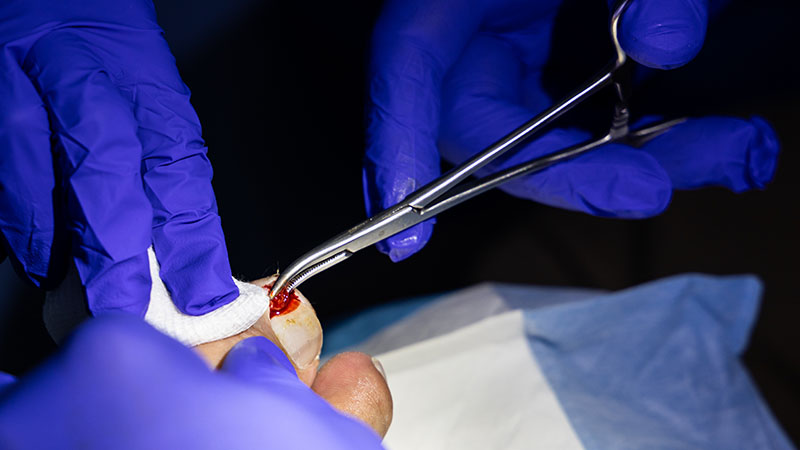Ingrown toenail is the sinking of the hard surface of the toenail into the surrounding soft tissues. This is a disturbing issue that causes irritation, infection, pain and discomfort especially with feet in shoes. As infection progresses, complaints become severe and treatment more difficult. It may then be necessary to perform surgical procedure and remove the toenail partly or completely. Precautions taken during early stages of ingrown toenail may prevent the need for surgical intervention. In some cases, even patients can domestically treat their problematic toenails themselves.
Causes of Ingrown Toenail
Explaining the causes of ingrown toenail often goes with listing the precautions to avoid this complication simply because ingrown toenail is a problem prompted by individuals themselves. For instance, one of the causes of ingrown toenail is overclipping of the toenail while another is giving the nails a round trim. Wearing tight shoes is also one of the reasons behind ingrown toenails. As can be seen, all three major causes of ingrown toenail are immediately related with personal preferences. In simplest terms, patients will have already taken the necessary precautions by avoiding these three habits.
Symptoms of Ingrown Toenail
- Pain and discomfort around the big toe
- Stiffness, swelling, and sensitivity on the edge of the toenail
- Burning sensation in the toes and rash
- Discharge caused by infection
Treating Ingrown Toenails
There is a difference in treating mild ingrown toenails and advanced ingrown toenails. Minor ingrown toenails can be easily treated via non-surgical applications; there are even some applications that you can administer by yourself at home. However progressed ingrown toenails may require surgical treatment.
Taking Precautions: the Easiest Treatment
In order to prevent ingrown toenails, you should trim your toenail straight across, rather than in a round shape. You should also be careful not to clip them too deep. Another precaution to take is avoiding tight footwear. Tight shoes cause ingrown toenails by applying pressure on the big toe. These precautions work both for preventing ingrown toenails and for stopping the progression of an existing ingrown toenail. In addition, you can treat yourself by following the suggestions listed below.
Treating Ingrown Toenails at Home
The irritation caused by minor ingrown toenail cases may be prevented by sticking a piece of cotton between the toenail and the soft tissue of the toe. You can dab the cotton in alcohol in order to disinfect the infected area. You can repeat this procedure daily until the irritation subsides. Another solution is to bathe your foot with ingrown toenail in warm water with some apple cider vinegar for 30 minutes. When performed daily, this can alleviate your pain. Please do not forget to rinse and dry your feet after each application.
Does Pedicure Heal Ingrown Toenails?
Pedicure can be beneficial for ingrown toenails; however, it would only be a temporary solution. Besides, pedicure will not cure swollen ingrown toenails.
Ingrown Toenail Surgery
If ingrown toenail does not subside after the preventive measures listed above, ingrown toenail surgery may be necessary. Ingrown toenail surgery is safely applied under local anaesthesia. For the operation, only the big toe is anaesthetised, and the patient feels no pain during the procedure. Depending on the severity of the case, part or whole of the toenail is removed. The patient is free to return home right after the procedure. The toe is dressed the following day. Patients are advised to keep the operated foot dry until told otherwise. Albeit rarely, ingrown toenail can recur. Therefore, it is very important that the points mentioned above are followed.
 EN
EN TR
TR AR
AR RU
RU